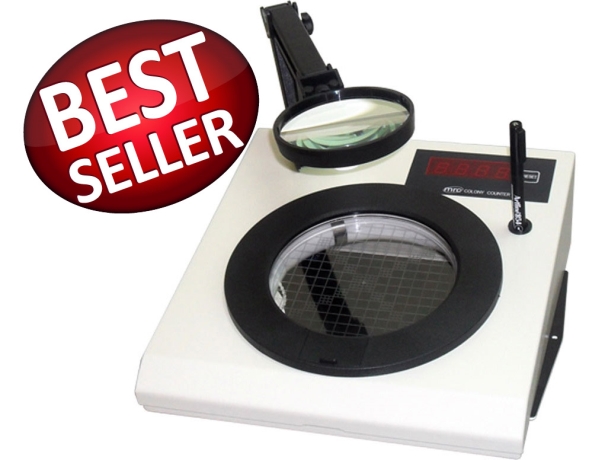A colony counter system is a specialized tool designed to facilitate the counting and analysis of bacterial or fungal colonies on agar plates. It utilizes various technologies to automate the counting process, reducing human error and increasing efficiency.
Accurate colony counting is essential for numerous microbiological applications, including drug development, food safety testing, and environmental monitoring. Colony counter systems streamline this process, allowing researchers to obtain precise colony counts in a fraction of the time it would take using manual methods.
Components of a Colony Counter System
A typical Colony Counter system consists of several key components that work together to facilitate the counting process.
Petri dish holder
The petri dish holder securely holds the agar plate in place during counting, ensuring stability and accurate positioning.
Light source
A uniform light source is essential for illuminating the agar plate and enhancing colony visibility. LED lights are commonly used due to their energy efficiency and long lifespan.
Magnifying lens
The magnifying lens magnifies the agar plate, allowing researchers to visualize individual colonies more clearly and accurately.
Counting grid
The counting grid is a transparent overlay with gridlines that are used to mark and tally the colonies. It helps prevent counting errors and ensures systematic counting across the entire agar plate.

Working Principle of Colony Counter Systems
Colony counter systems operate based on different principles, depending on their type and complexity.
Manual counting process
In manual colony counters, researchers visually inspect the agar plate through the magnifying lens and manually count the colonies by marking them on the counting grid.
Digital image processing
Digital colony counters capture high-resolution images of the agar plate using an integrated camera. Sophisticated image processing algorithms analyze the images, identify individual colonies based on their size, shape, and color, and automatically count them.
Automated detection algorithms
Automated colony counters utilize advanced detection algorithms to detect and count colonies with minimal human intervention. These algorithms are trained on vast datasets and can accurately differentiate between colonies and other artifacts on the agar plate.
Advantages of Colony Counter Systems
Colony counter systems offer several advantages over traditional manual counting methods.
Increased accuracy
By automating the counting process, colony counter systems minimize the risk of human error, resulting in more accurate and reproducible colony counts.
Time-saving
Colony counter systems can process agar plates much faster than manual methods, significantly reducing the time and labor required for colony counting.
Data storage and analysis capabilities
Many colony counter systems are equipped with built-in data storage and analysis features, allowing researchers to store colony count data digitally and perform statistical analysis with ease.
Applications of Colony Counter Systems
Colony counter systems find applications across various fields, including microbiology research, pharmaceutical development, and food and beverage quality control.
Microbiology research
In research laboratories, colony counter systems are used to quantify bacterial or fungal growth in culture plates, enabling researchers to study microbial behavior and response to experimental treatments.
Pharmaceutical industry
In the pharmaceutical industry, colony counter systems play a crucial role in quality control and assurance processes, ensuring that pharmaceutical products meet regulatory standards for microbial contamination.
Food and beverage industry
Colony counter systems are utilized in food and beverage production facilities to monitor for the presence of pathogens and spoilage organisms, ensuring product safety and quality.
Factors to Consider When Choosing a Colony Counter System
When selecting a colony counter system for their laboratory, researchers should consider several key factors to ensure that it meets their specific requirements.
Sample volume and throughput
The capacity of the colony counter system to process a large number of agar plates within a given timeframe is essential, especially for laboratories with high sample volumes.
Accuracy requirements
The level of accuracy required for colony counting depends on the intended application. Researchers should choose a colony counter system that can achieve the desired level of precision and reproducibility.